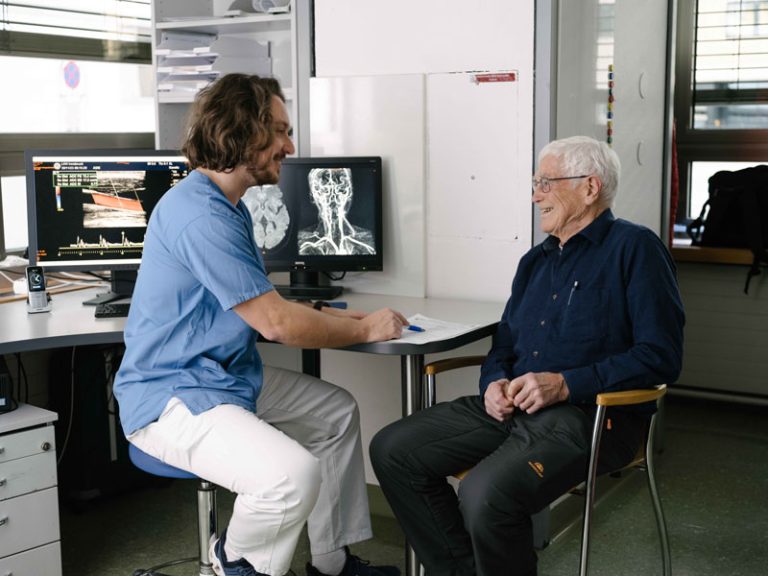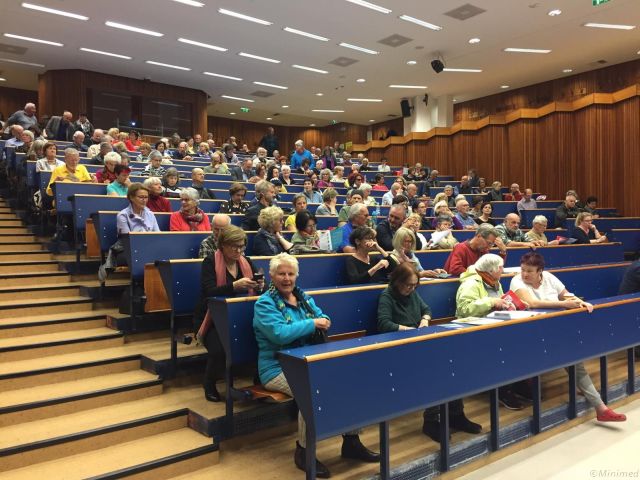– VASCage researcher investigates the epidemiology of small acute brain infarcts on MRI
Stroke is a leading cause of disability in the elderly. Common symptoms of stroke include acute problems with speech or vision, or numbness of an arm or leg, most often caused by a larger brain infarct. In contrast, small acute brain infarcts often are not noticeable – they occur silently and secretly. Yet they may be neither rare nor harmless. On the contrary: research data suggest that these tiny brain infarcts, only a few millimeters in size, are common in old age. Furthermore, individuals with small acute brain infarcts may have an increased risk of a “real” stroke or dementia. However, it is still largely unclear in which groups of people these “mini-infarcts” are most likely to occur and what significance they actually have for health.
Dr. Annemieke ter Telgte, senior scientist at VASCage – Centre on Clinical Stroke Research in Innsbruck, was recently awarded an ESPRIT grant from the FWF to answer these questions. With the grant, she aims to conduct the largest epidemiological study on this topic to date. She will analyse more than 50,000 brain magnetic resonance imaging (MRI) scans from the UK and around the world, also using novel automated image analysis techniques.
Small acute brain infarcts can be detected by MRI, but only during a short time window of a few days to weeks after the onset of the infarct. “It is a bit like shooting stars, which you only see if you look at exactly the right moment”, says VASCage researcher Dr. Annemieke ter Telgte. This creates a challenge because in many patients the small acute brain infarcts will be missed. As a result, one needs to investigate an extremely large number of MRI scans to detect enough patients with a small acute brain infarct. Therefore, Dr. Annemieke ter Telgte draws on two very large data sources. First, she will make use of the datasets available in the worldwide DIAGNOSE network (Diffusion-weighted ImAGiNg pOSitive lEsion consortium). This includes more than 8,000 brain scans from 10 different international studies. Second, she will analyze approximately 50,000 brain scans from the UK Biobank, a large study from the UK. To evaluate these brain MRI scans automatically, an algorithm based on machine learning is being developed at VASCage.
The project aims to clarify how frequently small acute brain infarcts occur in different groups of people. In addition, ter Telgte wants to find out whether cardiovascular risk factors, such as high blood pressure are related to small acute brain infarcts, and whether patients with small acute brain infarcts have an increased risk for developing dementia or experiencing a stroke in the future. Ultimately, Dr. ter Telgte hopes that in the future we can effectively prevent or treat small acute brain infarcts and their consequences.
Our vision at VASCage is to increase the healthy lifespan of the elderly population. Stroke is a major cause of poor life quality in old age. With our innovative research on prevention, diagnosis, therapy and rehabilitation of stroke we actively contribute to realise this vision,” says VASCage CEO Matthias Ullrich, MSc, LLm.



